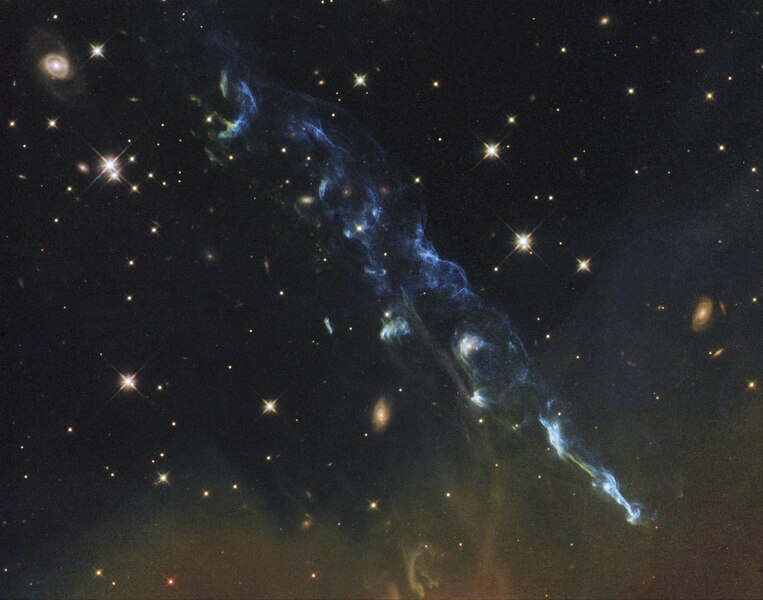File:Herbig-Haro 110 (captured by the Hubble Space Telescope).tif
Appearance

Size of this JPG preview of this TIF file: 763 × 600 pixels. Other resolutions: 305 × 240 pixels | 611 × 480 pixels | 977 × 768 pixels | 1,280 × 1,006 pixels | 2,560 × 2,012 pixels | 3,883 × 3,052 pixels.
Original file (3,883 × 3,052 pixels, file size: 26.63 MB, MIME type: image/tiff)
File history
Click on a date/time to view the file as it appeared at that time.
| Date/Time | Thumbnail | Dimensions | User | Comment | |
|---|---|---|---|---|---|
| current | 11:53, 8 July 2012 |  | 3,883 × 3,052 (26.63 MB) | Prof. Professorson | {{Information |Description=en:Herbig-Haro 110 is a geyser of hot gas from a newborn star that splashes up against and ricochets off the dense core of a cloud of molecular hydrogen. Although the plumes of gas look like whiffs of smoke, they are ac... |
File usage
The following 2 pages use this file:
Global file usage
The following other wikis use this file:
- Usage on en.wiktionary.org
- Usage on fa.wikipedia.org
- Usage on gl.wikipedia.org
- Usage on mk.wikipedia.org
- Usage on pl.wikipedia.org
- Usage on tr.wikipedia.org
- Usage on zh.wikipedia.org
